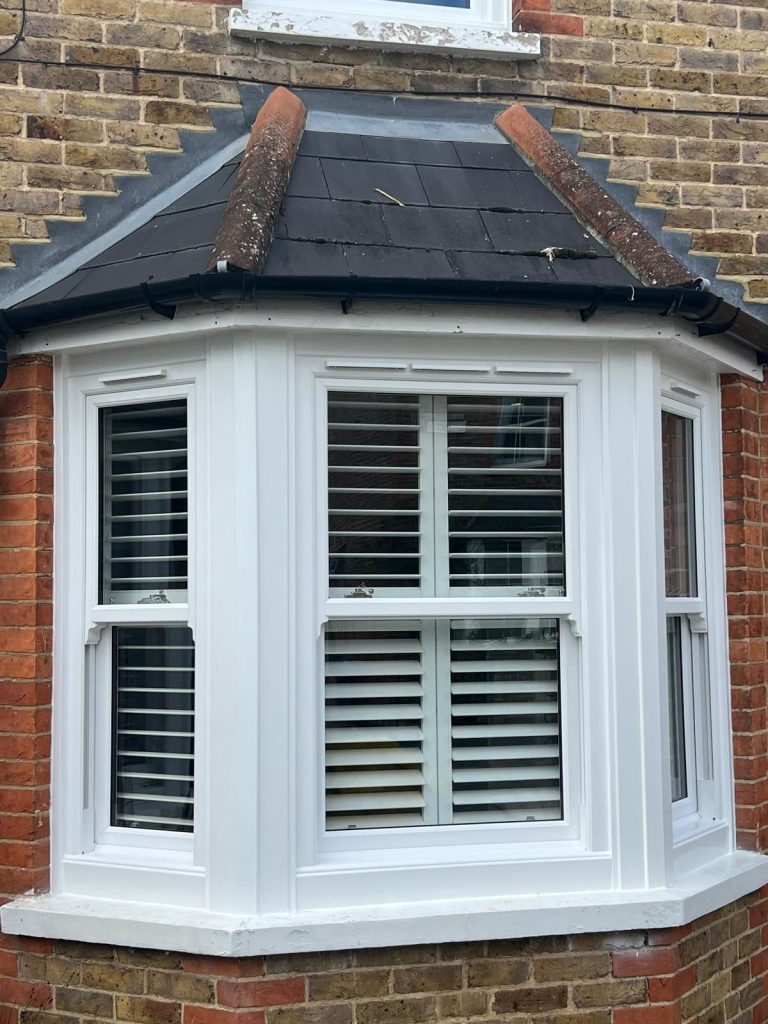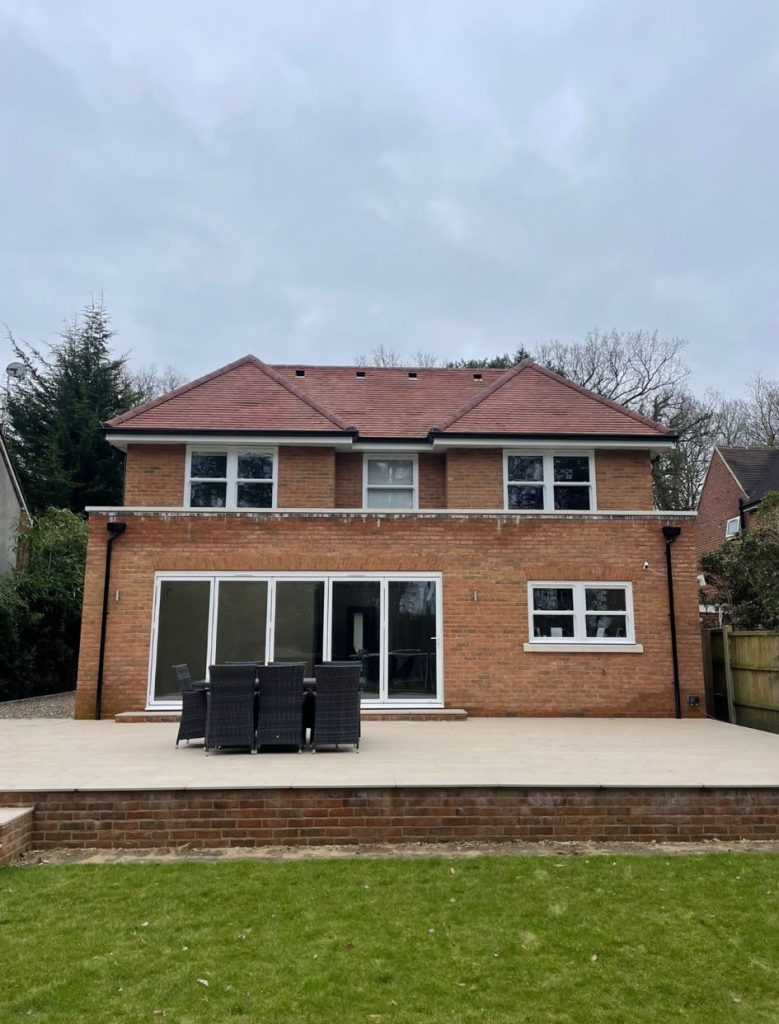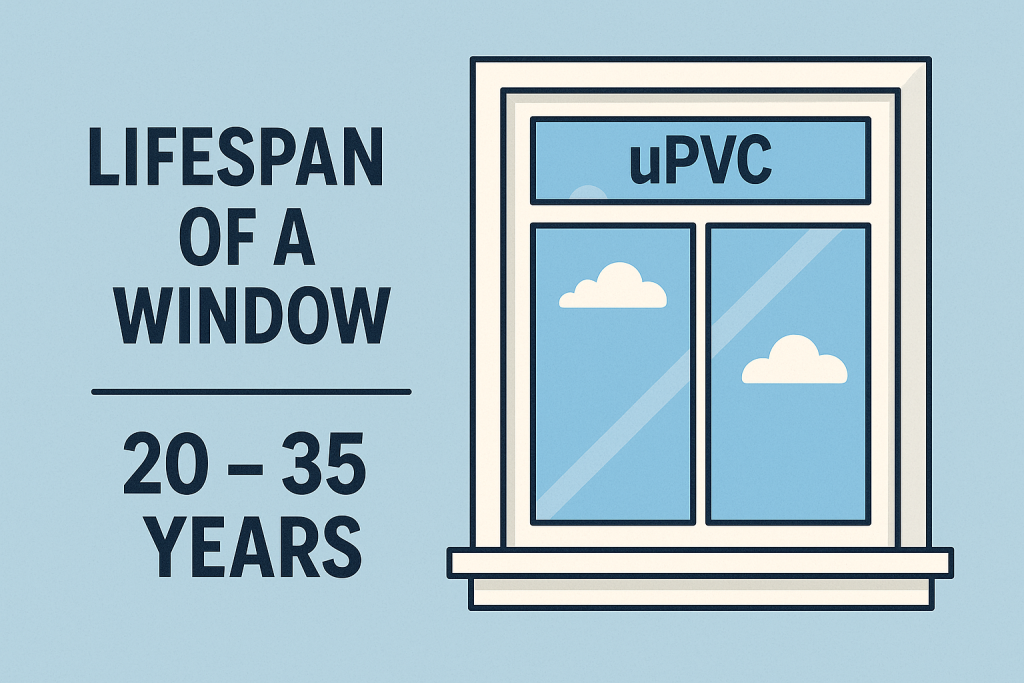A sash window is a type of window that opens by sliding one section over another. It’s a common feature in period properties across the UK and has been used in British architecture for over 300 years. Today, sash windows are still popular for their classic look and practical design.
We’ll explain exactly what a sash window is, how it works, the different styles available, and why homeowners still choose this type of window today.
What Makes a Window a “Sash” Window?
The word “sash” refers to the framed part of the window that holds the glass. In a sash window, these frames move vertically (or sometimes horizontally) to open and close.
Unlike casement windows, which swing open on hinges, a sash window uses a sliding mechanism. In traditional models, counterweights inside the frame help to balance the sash, making it easy to lift and hold in place.
You’ll find sash windows in both older homes and new builds, especially those looking to keep a traditional feel while using modern materials like uPVC.
Key Features of Sash Windows
Sash windows are easy to recognise thanks to their distinct shape and structure. Most sash windows include:
- Two window sashes that slide up or down
- Glazing bars that divide the glass into panes
- A vertical box frame that houses pulleys and weights
- Locks and lifts for ease and security
Modern sash window designs often include energy-efficient glazing, reinforced frames and tilt functions for easy cleaning.
Types of Sash Windows
There are a few main styles of sash windows. The type you choose often depends on your home’s age and the look you want to achieve.
Georgian Sash Windows
These have six or more small panes of glass in each sash, often arranged in a “six over six” grid.
Victorian Sash Windows
Typically use larger panes, often “two over two,” creating a more open feel while still being traditional.



Edwardian Sash Windows
Combine the two approaches, with multiple panes in the top sash and a single pane in the bottom.
Single-Hung vs Double-Hung
- Single-hung: Only one sash moves (usually the bottom).
- Double-hung: Both sashes slide up and down for better ventilation.
What Materials Are Used?
Originally, sash windows were made from softwood or hardwood. Today, many are made from more modern materials:
Timber
Traditional and ideal for listed buildings or conservation areas. Needs regular upkeep.
uPVC
A low-maintenance, durable material that mimics the look of timber. uPVC sash windows are common in homes looking for energy efficiency and long-term value.


Aluminium
Slim frames, modern appearance, and strong. Less common in traditional sash styles but available.
How Do Sash Windows Work?
Traditional sash windows use a counterbalance system with pulleys and weights hidden in the frame. When you lift the sash, the weights move to offset the weight of the glass, making it easier to open.
Modern versions may use a spiral balance or spring-loaded mechanism, which removes the need for large box frames. These systems are smoother, more compact, and easier to maintain.
Some sash windows also tilt inward for easier cleaning.
Advantages of Sash Windows
Sash windows are still widely used because they combine a traditional look with practical benefits. Key advantages include:
- Classic style that suits period homes
- Space saving, since sashes slide vertically
- Ventilation by opening both top and bottom sashes
- Security, with internal locks and reinforced frames
- Modern efficiency with double glazing and draught-proofing
Do Sash Windows Require Maintenance?
That depends on the material.
- Timber needs regular painting or staining to prevent rot
- uPVC sash windows are low maintenance — just clean the frames when needed
- Aluminium is also easy to keep clean and durable
Sliding mechanisms may occasionally need oiling or cleaning, especially in older models.
If you live in a conservation area, you may need approval to replace or update windows. Always check with your local planning authority.
Sash Windows and Building Regulations
All replacement windows, including sash windows, must meet UK building regulations. This includes thermal efficiency, ventilation, and safety glass in certain locations.
A FENSA-registered installer will make sure everything is compliant, and they’ll issue a certificate you can use when selling your home. You won’t need a council inspection if you have one.
Are Sash Windows Energy Efficient?
Modern sash windows are built with energy efficiency in mind. Look for:
- Double or triple glazing
- Low-E coated glass
- Warm edge spacers
- Draught-proof frames
These features help reduce energy bills and make your home more comfortable.
Older sash windows without these upgrades tend to be draughty. Replacing them with A-rated units is usually a good investment.
Window Style Comparison Table
To help you decide, here’s a simple comparison of four popular window styles in the UK.
| Window Type | How It Opens | Best For | Maintenance | Style |
|---|---|---|---|---|
| Sash Window | Vertical sliding sashes | Period homes, traditional aesthetics | Low (uPVC), Medium (Timber) | Classic |
| Casement Window | Hinged at the side | Modern homes, high ventilation | Very low (uPVC) | Contemporary |
| Flush Fit Window | Sits flush to frame | Modern or minimalist styles | Very low (uPVC) | Sleek/Modern |
| Bay Window | Multi-panelled projection | Adding light and space | Low to Medium | Decorative |
Each type offers different benefits, depending on your property and design goals. For example, casement windows provide excellent airflow, while bay windows create extra space and a wide view.
Typical Costs
Prices vary depending on size, material and glazing. Below is a rough estimate per window:
- uPVC sash window: £700 – £1,200
- Timber sash window: £1,200 – £2,000
- Bay sash window: £2,000+
- Flush fit or casement window: £500 – £900
Always get written quotes from a certified installer.
Is a Sash Window Right for You?
Choose sash windows if:
- You want to maintain your home’s traditional style
- You live in a conservation area or heritage property
- You’re looking for elegant windows with modern efficiency
- You prefer a vertical opening system
They’re especially popular in towns like Esher, where character homes are common and planning restrictions may apply.
Summary
A sash window is a timeless window design with sliding panels that add both charm and functionality. Whether you’re renovating a Georgian terrace or upgrading a Victorian semi, sash windows can deliver heritage style without compromising on performance.
With options in uPVC, timber or aluminium and energy-efficient glazing, they continue to be one of the most versatile window choices in the UK. Make sure to choose a FENSA-registered installer to guarantee compliance and peace of mind. Contact us here for any queries, we are FENSA registered and can do completely custom jobs.
If you’re unsure which window style suits your home best, speak to a local expert who can advise on cost, materials and fitting options.




